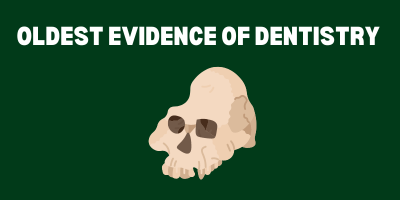
Dental decay (most commonly cavities) is considered one of the most common dental conditions in the world. Dental decay isn’t new, either. Scientists have found skulls with decayed teeth as early as 25,000 B.C and writings about dental decay (or ‘dental worms’) by Sumerians as early as 5000 B.C.
Dentistry, then, is also one of the oldest medical professions with the first mentions of a physician providing ‘dental therapy’ dating back to Egypt, 2700 B.C.
The Villabruna specimen
A 14,000-year-old skeleton was discovered, called the Villabruna specimen, in 1988 in Italy. But until recently, the prehistoric work on the skeleton’s teeth had been overlooked.
It wasn’t until 2015 that scientists reexamined the skull and found evidence that dental intervention was carried out even earlier than that by people around 12,000 B.C.
A skull with teeth intact was found where one of the back molars had signs of what they call ‘dental manipulation’. Today, we see this kind of work as fillings, root canals, or extraction if necessary.
On this 15,000-year-old skull, though, they found that the infected tissue inside the tooth was carved out with a small, sharp tool. Then, most likely, the site of the removed infection was cleaned.
It’s pretty cool to think that people were going to the dentist just like us so long ago. Well, maybe not just like us, but dental work was an option.
Are you due for your 6-month check-up? Make an appointment by filling out our appointment form here, or giving us a call at (617) 332-2872.





